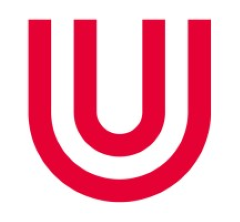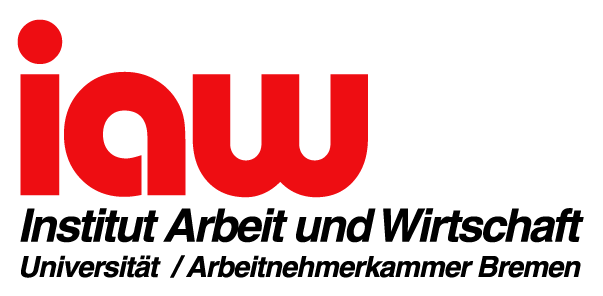Dryport – a modal shift in practice
During the recent decade the concept of dryports seems to have spread all over Europe and it continues to gain ground. In theory dryports appear to be one of the most appropriate answers to the challenges of economic growth and increasing amounts of cargo in European seaports: Dryports could optimise the distribution of goods by accelerating transport flows, rationalising logistic chains and improving the coordination of (traffic) infrastructures and locations. A particular importance for the concept of dryports is assumed in relation to seaports because many of them increasingly suffer from congestion, insufficient hinterland connections, lack of space for expansion and growing restrictions by neighbourhood and environmental regulations. Thus, the idea of dryports is mainly meant to discharge and relief the seaports.
Given this conceptual background, the present study pursues following research questions:
- What are the conditions for the specific combination of functions realised by a certain dryport?
- Under which conditions can a dryport take over an efficient relief function for one or more seaports? And more specifically: To which sort of relief function (environmental, mitigation of capacity problems, time saving, reduction of transport corridor congestion etc.) can dryports contribute under what conditions?
- What kind of governance mode is chosen for what reasons and how does that influence the integration of a certain dryport into a functional and stakeholder network?
- Which role plays the interrelationship between public and private actors for the governance dimension of the dryport concept?
In order to operationalise the research questions an examination was carried out under the EU’s North Sea Region Interreg IVB Programme, covering case studies in four partner regions of the project “Dryport - a modal shift in practice“. The enquiry was designed to compare the process of dryport implementation at Bremerhaven/Bremen, Felixstowe/Haven Gateway, Göteborg/Falköping and the Maritime Logistic Zone near the Port of Zeebrugge. Each of these case studies represents a certain constellation of conditions for the implementation and operation of dryports and thus allows to systematically compare these processes and their effects.
Manuel Kuehn, Karsten Seidel, Jochen Tholen, Günter Warsewa (2012): Dryports - Local Solutions for Global Transport Challenges, Peter Lang Publ., Series Maritime Logistics, Vol. 6, Frankfurt/M, Berlin, Bern, Brussels, New York, Oxford 2012
Duration:01 January 2010 - 31 December 2012
Research Team:Dr. rer. pol. Jochen Tholen, Dipl.-Kaufmann,Dipl.-Soziologe (Head of project)
Prof. Dr. Günter Warsewa, Dipl. Sozw. (Head of project)
M.A. Manuel Kühn
Karsten Seidel
Funding:Europäische Union; Bundesministerium für Verkehr, Bau und Stadtentwicklung (BMVBS)
During the recent decade the concept of dryports seems to have spread all over Europe and it continues to gain ground. In theory dryports appear to be one of the most appropriate answers to the challenges of economic growth and increasing amounts of cargo in European seaports: Dryports could optimise the distribution of goods by accelerating transport flows, rationalising logistic chains and improving the coordination of (traffic) infrastructures and locations. A particular importance for the concept of dryports is assumed in relation to seaports because many of them increasingly suffer from congestion, insufficient hinterland connections, lack of space for expansion and growing restrictions by neighbourhood and environmental regulations. Thus, the idea of dryports is mainly meant to discharge and relief the seaports.
Given this conceptual background, the present study pursues following research questions:
- What are the conditions for the specific combination of functions realised by a certain dryport?
- Under which conditions can a dryport take over an efficient relief function for one or more seaports? And more specifically: To which sort of relief function (environmental, mitigation of capacity problems, time saving, reduction of transport corridor congestion etc.) can dryports contribute under what conditions?
- What kind of governance mode is chosen for what reasons and how does that influence the integration of a certain dryport into a functional and stakeholder network?
- Which role plays the interrelationship between public and private actors for the governance dimension of the dryport concept?
In order to operationalise the research questions an examination was carried out under the EU’s North Sea Region Interreg IVB Programme, covering case studies in four partner regions of the project “Dryport - a modal shift in practice“. The enquiry was designed to compare the process of dryport implementation at Bremerhaven/Bremen, Felixstowe/Haven Gateway, Göteborg/Falköping and the Maritime Logistic Zone near the Port of Zeebrugge. Each of these case studies represents a certain constellation of conditions for the implementation and operation of dryports and thus allows to systematically compare these processes and their effects.
Manuel Kuehn, Karsten Seidel, Jochen Tholen, Günter Warsewa (2012): Dryports - Local Solutions for Global Transport Challenges, Peter Lang Publ., Series Maritime Logistics, Vol. 6, Frankfurt/M, Berlin, Bern, Brussels, New York, Oxford 2012
Duration:01 January 2010 - 31 December 2012
Research Team:Dr. rer. pol. Jochen Tholen, Dipl.-Kaufmann,Dipl.-Soziologe (Head of project)
Prof. Dr. Günter Warsewa, Dipl. Sozw. (Head of project)
M.A. Manuel Kühn
Karsten Seidel
Funding:Europäische Union; Bundesministerium für Verkehr, Bau und Stadtentwicklung (BMVBS)
During the recent decade the concept of dryports seems to have spread all over Europe and it continues to gain ground. In theory dryports appear to be one of the most appropriate answers to the challenges of economic growth and increasing amounts of cargo in European seaports: Dryports could optimise the distribution of goods by accelerating transport flows, rationalising logistic chains and improving the coordination of (traffic) infrastructures and locations. A particular importance for the concept of dryports is assumed in relation to seaports because many of them increasingly suffer from congestion, insufficient hinterland connections, lack of space for expansion and growing restrictions by neighbourhood and environmental regulations. Thus, the idea of dryports is mainly meant to discharge and relief the seaports.
Given this conceptual background, the present study pursues following research questions:
- What are the conditions for the specific combination of functions realised by a certain dryport?
- Under which conditions can a dryport take over an efficient relief function for one or more seaports? And more specifically: To which sort of relief function (environmental, mitigation of capacity problems, time saving, reduction of transport corridor congestion etc.) can dryports contribute under what conditions?
- What kind of governance mode is chosen for what reasons and how does that influence the integration of a certain dryport into a functional and stakeholder network?
- Which role plays the interrelationship between public and private actors for the governance dimension of the dryport concept?
In order to operationalise the research questions an examination was carried out under the EU’s North Sea Region Interreg IVB Programme, covering case studies in four partner regions of the project “Dryport - a modal shift in practice“. The enquiry was designed to compare the process of dryport implementation at Bremerhaven/Bremen, Felixstowe/Haven Gateway, Göteborg/Falköping and the Maritime Logistic Zone near the Port of Zeebrugge. Each of these case studies represents a certain constellation of conditions for the implementation and operation of dryports and thus allows to systematically compare these processes and their effects.
Manuel Kuehn, Karsten Seidel, Jochen Tholen, Günter Warsewa (2012): Dryports - Local Solutions for Global Transport Challenges, Peter Lang Publ., Series Maritime Logistics, Vol. 6, Frankfurt/M, Berlin, Bern, Brussels, New York, Oxford 2012
Duration:01 January 2010 - 31 December 2012
Research Team:Dr. rer. pol. Jochen Tholen, Dipl.-Kaufmann,Dipl.-Soziologe (Head of project)
Prof. Dr. Günter Warsewa, Dipl. Sozw. (Head of project)
M.A. Manuel Kühn
Karsten Seidel
Funding:Europäische Union; Bundesministerium für Verkehr, Bau und Stadtentwicklung (BMVBS)
Project Type:Third-party funded project




